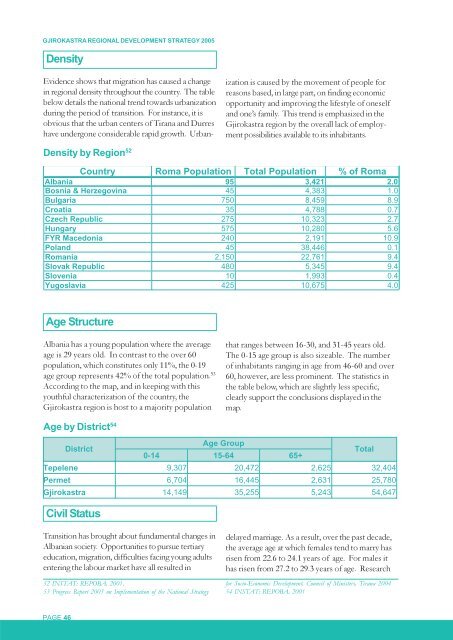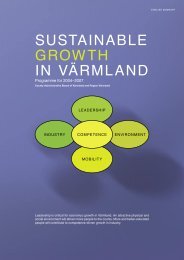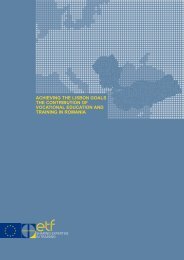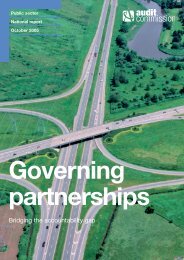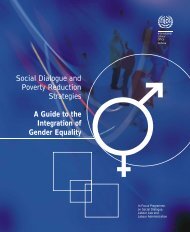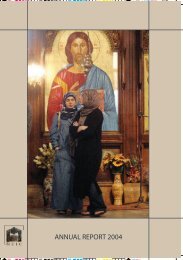PDF (18.5 MB) - Document Database website
PDF (18.5 MB) - Document Database website
PDF (18.5 MB) - Document Database website
Create successful ePaper yourself
Turn your PDF publications into a flip-book with our unique Google optimized e-Paper software.
GJIROKASTRA REGIONAL DEVELOPMENT STRATEGY 2005<br />
Density<br />
Evidence shows that migration has caused a change<br />
in regional density throughout the country. The table<br />
below details the national trend towards urbanization<br />
during the period of transition. For instance, it is<br />
obvious that the urban centers of Tirana and Durres<br />
have undergone considerable rapid growth. Urban-<br />
Density by Region 52<br />
Age Structure<br />
Albania has a young population where the average<br />
age is 29 years old. In contrast to the over 60<br />
population, which constitutes only 11%, the 0-19<br />
age group represents 42% of the total population. 53<br />
According to the map, and in keeping with this<br />
youthful characterization of the country, the<br />
Gjirokastra region is host to a majority population<br />
52 INSTAT: REPOBA, 2001.<br />
53 Progress Report 2003 on Implementation of the National Strategy<br />
PAGE 46<br />
ization is caused by the movement of people for<br />
reasons based, in large part, on finding economic<br />
opportunity and improving the lifestyle of oneself<br />
and one’s family. This trend is emphasized in the<br />
Gjirokastra region by the overall lack of employment<br />
possibilities available to its inhabitants.<br />
Country Roma Population Total Population % of Roma<br />
Albania 95 3,421 2.0<br />
Bosnia & Herzegovina 45 4,383 1.0<br />
Bulgaria 750 8,459 8.9<br />
Croatia 35 4,788 0.7<br />
Czech Republic 275 10,323 2.7<br />
Hungary 575 10,280 5.6<br />
FYR Macedonia 240 2,191 10.9<br />
Poland 45 38,446 0.1<br />
Romania 2,150 22,761 9.4<br />
Slovak Republic 480 5,345 9.4<br />
Slovenia 10 1,993 0.4<br />
Yugoslavia 425 10,675 4.0<br />
Age by District 54<br />
District<br />
Civil Status<br />
Transition has brought about fundamental changes in<br />
Albanian society. Opportunities to pursue tertiary<br />
education, migration, difficulties facing young adults<br />
entering the labour market have all resulted in<br />
Age Group<br />
0-14 15-64 65+<br />
that ranges between 16-30, and 31-45 years old.<br />
The 0-15 age group is also sizeable. The number<br />
of inhabitants ranging in age from 46-60 and over<br />
60, however, are less prominent. The statistics in<br />
the table below, which are slightly less specific,<br />
clearly support the conclusions displayed in the<br />
map.<br />
Total<br />
Tepelene 9,307 20,472 2,625 32,404<br />
Permet 6,704 16,445 2,631 25,780<br />
Gjirokastra 14,149 35,255 5,243 54,647<br />
delayed marriage. As a result, over the past decade,<br />
the average age at which females tend to marry has<br />
risen from 22.6 to 24.1 years of age. For males it<br />
has risen from 27.2 to 29.3 years of age. Research<br />
for Socio-Economic Development, Council of Ministers, Tirana 2004<br />
54 INSTAT: REPOBA, 2001


